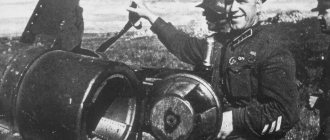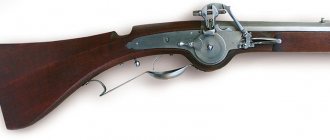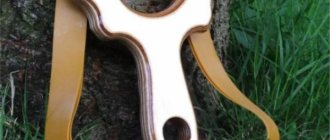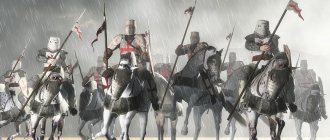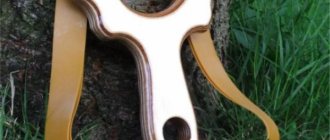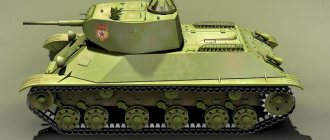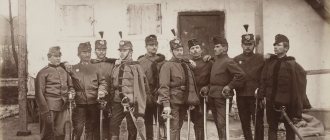Castle defense
The main principle of castle defense was to increase the losses of the attacking enemy while simultaneously reducing the negative consequences for the defenders.
A well-built castle could be effectively defended by even a small army and held for a very long time. Strong defenses allowed the castle's defenders to hold off an assault or siege until reinforcements arrived or the attacking troops were forced to retreat due to food shortages, disease, or casualties. Powerful castles had outer and inner gates.
Between them there was an open space called the barbican (or zwinger) .
It was surrounded by walls and became a trap for the enemy, who managed to destroy the outer gate. Once in the Barbican, the enemy became very vulnerable and could either retreat through the outer gates or storm the inner ones. At this time, the defenders generously poured tar or boiling oil on the attackers, and threw stones and spears at them. The ditches made it very difficult to storm the walls. Soldiers in armor could drown if they fell even into shallow water. Ditches with water also made it very difficult to undermine the walls, since water could wash out the tunnel and flood the diggers. Often the attackers had to drain the water ditches to continue the assault, or partially fill it in to install ladders or siege scaffolding.
Defenders : In peacetime, very few warriors were needed to guard the castle. At night, the bridges were raised and the portcullis lowered, thus blocking the castle. In the event of a threat or assault, a much larger army was brought in to defend the castle. Accurate archers or crossbowmen could use shelling to prevent the enemy from storming the castle or preparing for an assault.
Many people were also needed to throw stones from the walls and pour hot liquids onto the attackers. A considerable number of workers were needed to repair walls damaged by the assault and put out fires caused by fiery arrows. Aggressive defenders, on occasion, made a sortie from the castle and attacked the besieging army.
These lightning raids allowed the defenders to burn the staircases and forests of the besiegers, lowering their morale. In case of danger, local peasants took over the defense of the walls. Without possessing sufficient skills with a sword, spear or bow, they could perform many other important jobs.
Where did the castle come from?
The appearance of the castle is closely connected with the real “military revolution” that took place at the dawn of the Middle Ages.
The huge foot armies of the Ancient world turned into a small army of knights on horseback. And the question immediately arose: how can such forces - a strong but small detachment of horsemen - control their possessions? The answer was the construction of fortified points in which the knight and his army lived.
These fortifications could be successfully held in case of war. They served as a political center where the feudal lord lived and where taxes flowed. All the most important events in the district took place there.
Soon castles spread throughout Europe from England to Ancient Rus'. Everywhere archaeologists find traces of very similar fortifications.
Model of a medieval castle
I learned a lot about the medieval castle. I looked at a lot of illustrations, but still I would like to see the castle in real life. But to do this, you need to travel to France or Germany. For now this is just a dream. But finding a lock model on the Internet is feasible. A girl I don’t know, with the help of her dad, built a model of a castle based on the “Medieval Stone Fortress” construction set and supplemented it with homemade structures and toy warriors.
The castle has the main tower - the donjon, surrounded by walls and towers with loopholes. The tower with the main gate is protected by a portcullis and a drawbridge over the moat. Inside the castle there are outbuildings - a warehouse and a stable under a canopy. Outside the castle is the first line of defense - a palisade with a small gate and a wooden watchtower, connected to the castle by an easily destructible bridge.
Natural obstacle: the castle is located on a hill and is surrounded by a moat with water.
The castle was captured at the moment of the assault. The attackers use siege engines and devices - a battering ram, ladders, mobile shields, a large siege tower with a bridge. The defenders of the castle defend from the walls, towers and palisades with the help of throwing and bladed weapons. A detachment is moving along the bridge to make a sortie.
Among the defenders and attackers there are mounted warriors. The soldier figures are hand painted.
Chapter 4 The Besieged Castle
During the war, the purpose of the castle was twofold. Firstly, it should be a place in which the head of the surrounding region could protect himself from enemy attacks, but equally important was the fact that the people defending the castle could make a sortie and attack the enemy attacking the castle, engaging in battle with him. No sane commander would risk simply leading his forces past enemy fortifications; he could rarely know in advance how strong his garrison was - whether the owner of the castle had the strength to attack, or whether there were a couple of warriors, a dozen archers and servants outside the walls. It was quite possible that, counting on the weakness of the garrison, the commander could decide to storm and run into powerful resistance from a large detachment; therefore, one of two decisions was usually made - either the castle was besieged, or it was widely bypassed.There were only two ways to take possession of the castle - take it by storm, overcoming all defensive lines and breaking the military resistance of the garrison, or force it to surrender so as not to die of hunger. There was, however, a third way - to bribe one of the inhabitants of the castle to open the gate from the inside - but we will not consider this path here. A proper siege of a castle, carried out in accordance with all the laws of military art, was a very lengthy undertaking, requiring a large army and a variety of siege equipment. Very often the only possibility of capturing a castle was to storm it in the hope of breaking in, since few medieval armies carried siege engines in trains. If the commander went on such an assault, then the outcome was decided by throwing - preferably in two or three places in order to disperse the strength and attention of the garrison - foot soldiers, who had to somehow get over the ditch, climb the walls along long ladders, and then penetrate through the embrasures to their top, take possession of one or two towers, from where it was already possible to exit into the castle courtyard. True, after this the main tower still had to be taken; no ladder could reach its jagged top, and if it was not possible to break through the door of the main tower or the gate tower before the last defenders of the court had time to enter, or if it was not possible to set fire to the door, then the capture of the court did not at all mean the capture of the castle.
The defenders did not sleep and repelled the assault by all means available to them. Firstly, the defenders of the castle tried to stop or at least delay the onslaught of the attackers with the help of arrows from bows and crossbows, stones thrown from slings, and also, probably, huge darts and stones, which were rained down on the attackers using various throwing machines . When the enemy found himself at the foot of the outer wall of the castle courtyard, they began to pour hot oil and boiling water on his head, and throw slaked lime through holes in the fence or through the floor of hinged loopholes. When the attackers placed ladders against the walls, the defenders tried to overturn them with the help of long poles, the forked ends of which rested on the upper rungs of the ladders. One can imagine how difficult it was to topple a ladder 30 feet long (about 9 meters), made of thick timber, along which fifteen heavily armed warriors were climbing at the same time. It should be taken into account that the staircase rests against the wall at an angle, usually no less than sixty degrees. The weight that had to be moved using the poles was truly enormous. Of course, if the attackers placed the ladder at a sharper angle to the wall, then it would be easier to topple it. Imagine yourself in the midst of this feverish, nightmare-like assault, imagine that you are standing at the foot of the wall; boiling oil is poured on you, arrows and stones whiz around you as you struggle to set up a ladder. You are trying to stay on a sloping surface covered with slippery, liquid mud, behind you is a deep ditch filled with water. You stand on the bodies of your slain comrades, other warriors fall around you - some silently, some frantically screaming from unbearable pain; your armor became slippery from the hot oil, in places where the oil seeped through the chainmail. You experience excruciating pain from burns; Every time you and your comrades manage to lift the ladder and lean it against the wall at the right angle, the besieged push it away and overturn it. But you persevere, and finally you manage to install the ladder securely. Your hands are free, you can take a sword, ax or mace, move the shield from your back to your chest and begin to climb up the bars with your other comrades. With your weight, you feverishly press the ladder against the wall, raise the shield above your head, desperately trying with one hand to simultaneously hold the weapon and cling to the rungs. Stones and arrows hit the helmet and shield with a ringing sound; you climb as quickly as possible in order to quickly reach the level of the battlements and embrasures, in order to finally engage in hand-to-hand combat with the defenders of the castle and get rid of the stones and arrows raining down on your head. And finally, you reach a parapet covered with battlements; in the embrasure that opens right in front of you, there are at least a dozen warriors. They do everything to reach you with weapons, to slash you, to make you lose your balance, to push you off the stairs, from a height of thirty feet, down onto the mutilated bodies of the dead lying there. There are strong guys behind you, your reliable comrades, but none of them can do anything to help you. Only after you manage to rush onto the parapet and clear the place will they be able to join and support you. But since you are already ahead of everyone, your choice is not so great - either you win and jump from the stairs to the wall, and from there the path opens into the courtyard, or you are defeated and fly into the ditch.
Such an assault was truly a desperate undertaking, much more difficult and dangerous for the besiegers than for the besieged. When the assault began on the move, without appropriate preparation, it, as a rule, turned out to be unsuccessful. But when the attackers stormed the walls that had been destroyed in preparation, things usually took a completely different turn.
There were three ways to break through the walls of a castle, all of which were used in sieges either sequentially or simultaneously. The first method was to try to break through the walls with large stones, which, with the help of special machines - ballistas or catapults - were thrown from a distance into the walls of the castle. The second method used hammers, drills, or picks to make a hole in the wall large enough to cause it to collapse. The third method was undermining - laying a mine. To do this, a tunnel was dug underground, usually starting at a fairly considerable distance from the castle walls, so that the besieged would not see the working miners. When the tunnel reached the wall, a large cavity was dug under it - in fact, it was called a mine. While the mine was being dug, its ceiling was secured with wooden supports so that it would not collapse prematurely, burying the miners underneath. When the mine reached the required size, its cavity was filled with brushwood and other fuel, poured generously with fat and oil, and then set on fire. To do this, one person was left in the dungeon, who set fire to flammable material and went to the besiegers’ camp. This task was quite dangerous, since the arsonist could suffocate in the acrid smoke. If everything went as planned, then the supports burned out and the wall collapsed into a dug hole.
In order to counter these forms of attack, the garrison also had certain methods of defense. Of course, nothing could be done about the stones flying from ballistae and catapults, so the only remedy was a counterattack. The castles also had stone-throwing machines, from which they threw stones at the enemy’s vehicles, and often the besieged managed to break the enemy’s guns. Sometimes the catapults were loaded with barrels of Greek fire, a partly explosive, highly flammable mixture similar to modern napalm, the composition of which is now forgotten. In this way it was possible to destroy most of the enemy’s siege machines. A more chivalrous way to get rid of the machines was to send a detachment of daredevils to the besiegers’ camp, who personally set them on fire. A great many military feats were accomplished in this way. It was more difficult to fight battering rams or drills. The besieged could, for example, cover the wall with a pillow woven from flexible rods that absorbed the energy of blows, but such protection could rarely last more than a few hours. If the attackers did not find a way to cut the ropes on which the device was lowered down to the foot of the wall, the ram still pierced the structure of the defenders. There was another trick - lower down a pole forked like a fork at the end, put the fork on the rod of the ram and block its movement. But in practice this was rarely achievable. Imagine how difficult it is to lower a pole dangling from side to side on a rope from a seven-meter height and accurately place its forked end on a rod moving back and forth, not to mention the fact that for this it was necessary to lean far out of the embrasure, and therefore to substitute yourself under a hail of enemy arrows.
The only means against mines was a countermine - that is, a tunnel dug from the castle towards the mine, which was brought by the besiegers. The success of placing a countermine depended on knowing the location of the enemy mine. But when a mine came dangerously close to the castle, it was not difficult to recognize its approach, for it was impossible to hide the noise of excavation work. The defenders of the castle constantly listened, trying to catch these ominous sounds as early as possible. There are many stories of furious skirmishes by lantern light in pitch-dark tunnels. Sometimes, after countermine had met mine and there had been a brief skirmish between the teams of sappers, they would leave the tunnels and the knights would descend down to fight in a glorious underground duel. Under the walls of Melun, Henry V, who was besieging it in 1421, descended into a tunnel to fight with the ruler of the city, Sir de Barbazan.
Sometimes, after the miners had finished their work and the mine chamber was ready, the besieging side turned to the defenders and summoned the garrison chief to negotiations. He would appear on the wall or go to the window, and he would be told that the castle was mined and offered to surrender. In some cases, the boss refused to believe it, and then he was asked to go down and have a look. The head of the garrison with a white flag of truce left the castle, he was shown a ready-made mine so that he could be convinced of the truth of the message. The measure was reasonable, because not a single commander who besieged the castle wanted to suffer greater losses than was possible and did not want to waste forces beyond necessity, especially since most often the enemy needed either the castle or its owner - an aristocrat or king, so the castle was not destroyed if it was possible to do without it. When the chief of the garrison was convinced that he was not being deceived, he agreed to surrender, seeing the hopelessness of his situation, and then the besiegers filled in the mine and the castle remained intact.
The machines used for these types of siege and assault were simple in principle, and their design has not undergone significant changes since the times of ancient Assyria, that is, since the 8th century BC. e. It is difficult to say exactly how these machines were made, for the various descriptions of them in medieval chronicles are not sufficiently definite; however, the general idea can be grasped. The first machine was a throwing weapon called a trebuchet,
designed for throwing the largest and heaviest stones. The gun was mounted on a massive wooden frame, often standing on small wheels, which made it possible to move the gun around the terrain. The working part of the trebuchet was supported by two powerful vertical pillars. A long rod was attached to a thick, strong axle located between two posts. The shaft was attached to the rod not in the middle, but closer to one of the ends; as a result, the rod had two arms - one short and the other long. A leather bag, similar to a sling bag, was suspended from the end of the long arm, and a very heavy counterweight was suspended from the short arm. In preparation for a shot, the long shoulder was lowered to the ground, and the short one, accordingly, rose high into the air. The rod was secured in this position. After this, a stone was placed in the bag. Then they pulled out the stake or wedge that held the rod, the load on the short arm began to rapidly fall down, pulling the short arm along with it. The long shoulder rose sharply upward, the stone described an arc and flew out of the bag towards the target.
An older and perhaps less powerful stone-throwing weapon was the catapult. The throwing force was provided in this machine by torque, that is, the energy of a twisted rope was used to fire the shot. A long rod was placed between two powerful supports, the same as in a trebuchet, but in a catapult it was attached to the bottom of the gun frame, and the short arm was shorter than in a trebuchet. The rod was passed through a loop of twisted ropes, and at the end was a ladle, similar in shape to a bag or spoon. In order to charge the catapult, the end of the rod was lowered down and secured with a rope with a lock. After this, the ropes at the short shoulder were twisted tightly using a vertical capstan, which was held on an axis fixed between the vertical posts. When the ropes were twisted tightly enough, the capstan was secured with a wedge. Then, to shoot, they unlocked the lock on the long shoulder, freeing it. The ropes of the capstan spun with force, the spoon quickly described an arc and hit a transverse beam mounted on vertical posts above the axis of the capstan. A stone, a barrel of Greek fire, or another projectile was thrown at the target with great force. If you take one end of a regular ruler in your left hand, put a piece of chewing gum or a wad of paper on the other end with your right hand, bend the ruler, and then release the right end, you will fire a catapult shot. If, when straightening the ruler, an object is encountered in its path that stops its movement in a vertical position, then the projectile will fly further and with greater force.
Another type of medieval artillery was represented by the ballista. A ballista is a weapon that looks like a huge crossbow mounted on a rotating stand. The Romans used it for the same purposes for which they used light field guns much later. The ballistas did not have wheels; they were placed on four legs that rose approximately 4 feet (about 1.25 meters) above the ground. The frame of the machine, corresponding in its purpose to the crossbow rod, was mounted on a rotating gate at the top of the stand, so the weapon could be rotated in a horizontal plane in a semicircle to the right and left, as well as raise or lower the front end, changing the angle of departure of the arrow. Only two or three people had to operate the car, the firing rate was quite high, and the people were covered with a shield attached to the bow, like the shield of a good old field gun. It was a weapon that was used mainly against enemy personnel. The ballista was fired from a great distance at the arrows on the castle walls; in addition, arrows with burning oakum were fired from ballistae to set fire to roofs or wooden wall fences, as well as wooden buildings in the castle courtyard.
Ram
suspended from ropes hanging from crossbars attached to the tops of vertical posts. If possible, the tip of the ram was bound with hard iron. The end was pointed. Functionally, it was a very simple weapon - it was simply swung and hit with the tip on the stones of the wall, but since for this the machine had to be pulled close to the wall, a lot of preliminary work was required. They filled up part of the ditch, and the car was pulled towards the wall under continuous fire. Since the gun had to be operated by people who would swing the ram for hours, they had to be protected by a strong roof that covered the entire gun. In order to make the roof fireproof, it was covered with raw leather or sheets of iron.
Kylo worked on the same principle, but instead of a heavy, thick rod, a thinner one was used, equipped with a long, strong point at the end. It was a more subtle military instrument. The point was pointed into crevices and cracks in the wall. They also worked with the drill under a canopy. Its shape resembled a pick, but it was used like a giant drill, picking out mortar from the joints between masonry stones.
Rice. 21. Trebuchet. These guns were of different sizes, some were quite small, while others were even larger than the one shown in the picture. A large weight is attached to the short arm of the throwing rod - usually a basket filled with large stones; a long arm, to the end of which a sling loaded with projectiles was tied, pulled to the ground by ropes wound around the winch collar. When the winch handles were released, the counterweight of the short arm fell down, and the sling rose rapidly and threw a projectile - usually a large stone, but sometimes a dead horse - a medieval form of germ warfare - or, in very rare cases, such cruelty , that they threw a prisoner or hostage to the enemy.
Another siege machine, often used in attacks on castles, was a large mobile tower, which was also dragged close to the wall. The tower was a tall structure with several tiers or floors. The floors were connected to each other by stairs, and the top floor was a kind of iron-clad drawbridge. There were many warriors on each floor during the battle. When the tower was close to the wall, the drawbridge was lowered, and the soldiers on the top floor rushed to the walls, followed by the soldiers waiting their turn on the lower floors. As soon as the tower was in close proximity to the wall and the drawbridge could be lowered onto the wall, the defenders of the castle found themselves in a difficult situation, but until the tower was pulled up to the wall, the position of the soldiers on its floors was very dangerous. The tower was a huge target, which was also located at a very close distance. It moved very slowly and was vulnerable to the besieged vehicles; their ballistas fired heavy iron arrows at point-blank range at the tower, which easily pierced walls made of twigs and wood. Although the walls of the tower were thoroughly soaked with water before moving towards the castle walls, the sun dried out the tower, and it could be set on fire with Greek fire or burning oil without much difficulty. The unfortunate soldiers, who had to drag the heavy tower over uneven ground and across a ditch that still had to be filled, were completely unprotected and suffered huge losses. For the knights and warriors who were on the floors of the tower for two to three hours of travel (this is how long it usually took to drag the structure to the wall), this road must have been a real nightmare.
Rice. 22. Catapult. It performed the same function as a trebuchet, but its operation was based on a different principle. One end of the long rod was passed through a network of twisted ropes, the ends of which were attached to the winch collar, and a bucket was attached to the opposite end, into which the projectiles were placed. This end was pulled down with a winch and fixed, after which the ropes were tightly twisted with another winch. Having placed the projectile in the bucket, the handles of the second winch were released.
Tower (later it became known as the “bell tower”)
it could be used in another way - as an observation post - or send archers and crossbowmen there, who could now fire from above at the walls and courtyard of the castle. Henry III did just that when he besieged Bedford Castle in 1224; the effect was striking - the defenders could not take off their armor for a minute - the rain of enemy arrows raining down on them was so dangerous.
Rice. 23. Ballista. It is simply a very large crossbow on a rotating carriage that shoots large iron arrows.
Combat vehicles were given a wide variety of nicknames and names. The canopies that covered the rams were often called cats
or
pigs,
and kylo -
a mouse.
In 1265, during the siege of Kenilworth, the tower with archers (the same as that of Henry III at Bedford forty-one years earlier) was nicknamed "The Bear".
A common name for stone throwing tools was malvoisin
(evil neighbor). Nicknames and names were given to most of the machines by both the attackers who used them and the besieged who suffered great damage from them.
It is very tempting to imagine that the garrisons of 13th-century castles were very numerous; everyone thinks that the walls surrounding the castle courtyard were packed with soldiers all along the perimeter, but in reality this was not the case. In peacetime the garrisons of most castles, even large royal castles such as Corfi, Dover or Oxford, consisted of half a dozen knights and probably a couple of dozen other warriors, fourteen crossbowmen, a chaplain and various servants - cooks, carpenters, etc. in small castles the garrisons were even smaller - one knight, four warriors, three crossbowmen. Even during hostilities, the garrisons were incredibly small in number. The roll of 1174 mentions only twenty knights at Oxford, and ten knights and forty men-at-arms at Warke; this was the year that Henry II was at war in England with his rebellious sons. When John rebelled against his brother Richard I - while that courageous monarch was languishing in German captivity (1193) - the roll tells us that in total at Norwich - a very large castle - and at Canterbury the total number of their garrisons was seventy five people. In 1215, when John besieged Rochester Castle, he was confronted by only a hundred knights, a few crossbowmen and servants; a year later, a larger force held Dover Castle, besieged by Prince Louis of France. Roger of Wendover claims that there were one hundred and forty knights, many men-at-arms and other warriors in the castle. But at that time Dover was an extremely strategically important and very large castle. The fact that castles could be held for a long time by small forces under the pressure of superior enemy forces speaks of the effectiveness of castle defensive systems. In 1216, Odygham Castle in Hampshire held out for two weeks, defended by three knights and ten men-at-arms. Several centuries later, Corfi Castle withstood a much longer siege by a parliamentary army equipped with powerful cannons; The castle was defended by an elderly woman (Lady Mary Banks), several old veterans and maids. The parliamentary troops took the castle only because one of the maids lost her nerve and opened the gate.
Rice. 24. Cat, or pig. The battering ram was protected on top by a long canopy, which was covered with raw leather to protect it from arson.
Now let's turn to the stories about the sieges of some castles. First I will give a description of the capture of the castle of Le Puise, which stood on an embankment and surrounded by a wall in France in 1111. The castle was besieged by troops under the command of King Louis the Tolstoy, and defended by its owner, Hugues Le Puiset. The garrison began with a sortie, trying to drive the king's army away from the castle walls before they began a regular siege. But the foray was unsuccessful, and the South had to return to the castle, under the protection of its palisade. The attackers took the next active action. The king sent a detachment under the command of Count Theobald of Chartres with the task of going around the castle from the rear and taking it by storm. This attack also failed, partly because the bank of the ditch was too steep and high, but mainly because the garrison again made a bold foray and a cavalry detachment attacked the assault detachment from the rear. The king's warriors, suffering heavy losses, retreated - many drowned in the ditch - and the horsemen of the South returned safely to the castle. Soon after this, inflamed by the bright sermon of the priest, the main forces besieging the castle rushed into a furious attack, trying to cross the ditch and break through to the walls. They climbed the steep bank to the palisade, despite the desperate defense of the besieged, who did everything in their power. The attackers filled the ditch and compacted the earth, pulled out the huge logs of the palisade from the ground and burst into the castle courtyard. Hugues Le Puiset and his surviving soldiers took refuge in the main tower on the hill, in the stronghold of the castle, but in defending the court they suffered such heavy losses that they could now neither defend themselves nor make sorties, so they soon had to surrender to the mercy of winner.
Rice. 25. An active battering ram at the foot of the wall.
Rice. 26. “Bell tower”, a large movable tower, which, together with the soldiers located on its floors, was dragged to the wall. When the tower was close enough to the walls, a drawbridge was lowered onto the parapet, and people from the tower rushed to the wall. The side walls of the tower are covered with raw hides to reduce the likelihood of arson.
Here we have an example of the active actions that a garrison can take when defending a castle, making swift, daring forays. As we can see, when defending a castle, the best defense is an offensive.
The 1215 siege of Rochester Castle by King John, fighting the rebel barons, provides a rare example of a castle's main tower being destroyed and stormed. Having made their way through the outer defenses into the castle courtyard, the besiegers stopped in front of an impregnable quadrangular tower. But the king's miners managed to bring a tunnel under one of its corners and dig a large mine chamber under it. Its ceiling was reinforced with supports and, as usual, filled with brushwood. A letter from John to the royal justiciar [4] Hubert de Burgh has survived to this day: “We command you with all possible haste, whether day or night, to send us forty bacon pigs, the fattest and least suitable for food, to kindle a fire under tower..." The question arises: why did the king need pigs? Once delivered to the castle, the pigs were slaughtered and dressed, and their lard and fat were extracted. The logs of the mine supports were thickly smeared with this fat, and the brushwood was filled with interior lard. You can imagine how it all blazed in the mine chamber. The corner of the main building, along with the corner turret, collapsed, and the king’s soldiers poured into the castle, but there they came across a transverse wall, behind which the besieged held out for several more days.
If you ever visit Rochester Castle, pay attention to the four corner towers. Three of them have the usual quadrangular shape, and the fourth is round and larger in size. For many years after 1215 the tower remained in ruins, but then Henry III ordered the fourth tower to be rebuilt. Some may say that the tower is round because King Henry ordered it to be so, but it seems to me that it would never have become round if forty pigs had not been found in time.
The best example of a castle being captured is the capture of Bedford Castle in 1224. It was defended by the men of King John's old mercenary captain, Fox de Brot, who challenged the young King Henry III. Fox himself was absent, but his brother and wife defended the castle for him. To begin with, the entire garrison of the castle was excommunicated; then the siege engines were dragged up to the walls. We read in ancient documents that a trebuchet and two catapults were installed on the eastern side, two catapults on the western side, one catapult on the northern side, and one on the southern side, in order to fire at the main tower from all sides. To monitor what was happening in the castle and for shelling, two mobile siege towers were built. There were crossbowmen constantly on the tower, holding the defenders at gunpoint and not allowing them to remove at least part of their armor or raise their heads. The defenders were given no rest day or night, constantly bombarding the castle with arrows and heavy stones. The defenders had no intention of surrendering, thinking that if they withstood the siege, their lord Fox de Brot would have time to come to the rescue. They defended themselves fiercely, killing Lord Richard de Argentan, six knights and more than two hundred men-at-arms, as well as many soldiers serving the siege engines. The king realized that the siege would be long; he was very upset about this and vowed to hang the entire garrison if he took the castle.
After four assaults, the castle was actually taken. The Barbican was the first to fall. Then, having lost several people, the besiegers took the castle courtyard, seizing rich booty in the warehouses - wheat, pigs, cattle, as well as horses, harness, a lot of armor and military equipment and a large number of crossbows. They were now near the main stronghold - the citadel - in front of the towers and walls on the hill and the main building. The miners began work. They dug a large wall that surrounded the entire length (like a shell) of the top of the hill. Now the attackers were inside the courtyard of the donjon; it remained the only fortress that had to be taken. An assault was attempted, as a result of which the king lost several people killed and ten prisoners - these latter were captured by the besieged and taken to the castle. Then the miners got to work again, and “on the eve of the Day of the Assumption, closer to Vespers” - that is, at about four o’clock in the afternoon on August 14, the mine was set on fire. Smoke penetrated into the interior of the castle, preventing the starving, exhausted defenders of the castle from breathing, the tower collapsed, and deep cracks appeared along the wall. Further resistance became absolutely pointless, and the surviving defenders raised the royal banner, thereby giving a sign that they were surrendering. The next day they were brought before the king; they were allowed to be excommunicated; but the king ordered the six leaders of the rebellion, along with William, Fox's brother, to be hanged.
Many records have survived to this day, telling us about the events that had to be carried out to organize this siege. Siege engines were brought from Lincoln and all over Northampton; other guns had to be built locally from trees felled in the forests of Northamptonshire. The logs were brought to Bedford Castle. (The Warden monks complained when the king's foresters cut down their trees.) Carpenters were called in; The constable of Windsor Castle was ordered to provide horses for Master Thomas and others, and to take care of the delivery of their instruments, "so that they may come to us, day or night, as quickly as possible and without delay." Other craftsmen were sent from Lincoln and London. Ropes and ropes for siege engines were also delivered from London and Cambridge. Leathers were brought from Northampton to cover cats and siege towers and to make slings. Grease for lubricating the mechanisms was delivered from London. The sheriffs of Bedfordshire and Northamptonshire were ordered to "send us without delay to Bedford all the quarrymen and stonemasons under your jurisdiction, together with their wagons, sledges and stones." Roger de Clifford, constable of St. Briavelle, sent miners from Hereford and Deacons' Wood. Crossbowmen arrived from London, and many thousands of arrows were sent for them. The bailiffs of Northampton were ordered, “since you love us and our honor is dear to you, you must oblige all the skilled blacksmiths in their trade, without resting day or night, to make for us four thousand well-sharpened arrows for crossbows that can fly well.” , and without delay send them to Bedford. Fifteen thousand of these arrows were sent from Corfu. These passages show how much work had to be done to organize a regular siege of the castle, according to all the rules of military art of that time. When the king himself was present at the siege, then, naturally, he was entitled to some excesses. All the expensive and richly decorated tents were delivered on special carts from London, with all the coats of arms and items of comfort and luxury, as well as such overseas delicacies as cinnamon, ginger, pepper, saffron, almonds and large quantities of wines of a wide variety of varieties. When the siege was over, everything was packed and sent to its destination; the machines were dismantled and taken to the Tower of London and Northampton, and carpenters, miners, stonemasons, tanners and other workers were sent home and were able to return to their usual occupations. Bedford Castle was abandoned, that is, all its defensive structures were dismantled and they became unusable, and Fox de Brot, abandoned by his wife and abandoned by his friends, went into exile.
Today, many castles in England present a picture of desolation. But not only the inexorable passage of time is to blame for this. The fact is that they were deliberately and purposefully destroyed - completely or partially. But just as the ruined English abbeys might still have survived in as excellent condition as the great cathedrals had it not been for Henry VIII's order to dissolve the monasteries, ancient castles also survived until the Civil War of 1642-1649, when they again became into battle arenas - they were held by supporters of the king, and besieged by the troops of parliament, as, for example, it was in Corfi. To ensure that captured castles could never again be used in hostilities against Parliament, their outer walls, towers, gates, inner walls and main towers were blown up. The ruins of Corfe Castle in Dorset, once one of the most splendid possessions of the English crown, are at the same time a monument to the heroic defense led by the aged Lady Banks and her maids, as well as a monument to the strength of the structure itself. For if you take a close look at the gray-yellow fragments of the wall scattered across the natural hill of Corfu, on which the castle once stood, you will be able to see with your own eyes how strong they were and how conscientiously they were built. If it had not been blown up by gunpowder, it would have stood in its place to this day, like some other large castles, the fate of which was happier.
Notes:
4
Justiciar is the chief political and judicial official of the crown. (Editor's note)
Table of contents
Gate and Barbican
Another weak point of the castle is the gate. Indeed, if everything is built of stone, then the easiest way is to break through the only wooden part of the structure. Therefore, the gate itself turned into a fortification, which consisted of a tower or even two, which made it possible to fire at the attackers.
If the gate was destroyed, then the enemy was met by a heavy iron grating - a gersa. Usually it was in a raised state, but at the right moment it was lowered, and the enemy fighters who broke through the gate found themselves facing a new obstacle.
Gate of Warwick Castle in England
In large castles, the fortifications of the gates turned into a separate fortification structure. In this case, a barbican was built on the other side of the moat - an additional tower or even several towers surrounded by a wall. As a result, in order to simply approach the castle gates, it was necessary not only to overcome the moat, but also to take the barbican before that. A bridge led from the barbican to the gate, which was either made liftable to be raised in case of a siege, or, without thinking twice, was destroyed.
Kalemegdon Fortress, Serbia (photo source)
Who owned castles in the Middle Ages?
During the Middle Ages, Europe experienced many changes. After the collapse of the Roman Empire, the processes of resettlement of peoples began, new kingdoms and states emerged. All this was accompanied by constant conflicts and strife.
A feudal nobleman who had a knighthood, in order to protect himself from enemies, and they could even be his closest neighbors, was forced to strengthen his home as much as possible and build a castle.
Wikipedia suggests distinguishing between a castle and a fortress. A fortress is a walled area of land with houses and other buildings. The castle is smaller in size. This is a single structure that includes walls, towers, bridges and other structures.
The castle was the private fortress of a noble lord and his family. In addition to the direct function of protection, it was an indicator of power and well-being. But not all knights could afford it. The owner could be an entire knightly order - a community of warriors.
Living conditions in the castle
The castle provided the need for security. However, its inhabitants often had to neglect other benefits.
Little light penetrated into the premises, since the windows were replaced by narrow loopholes, which were covered with dense materials. The living rooms were heated with fireplaces, but this did not save them from the dank damp and cold. In the harsh winter, the walls froze through. Using latrines during the cold season was especially uncomfortable.
Residents often had to neglect hygiene. Most of the water from the well was used to maintain vital functions and care for animals.
Over time, the structure of castles became more complex and new elements appeared. However, the development of gunpowder weapons deprived castles of their main advantage - inaccessibility. They were replaced by fortresses with more complex engineering solutions.
Gradually, medieval castles, many of which have survived to this day, turned into architectural monuments and reminiscent of the era of chivalry.

